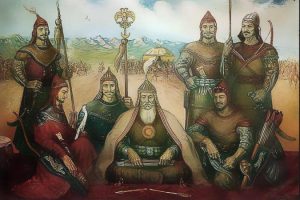The year 1945 marked a turning point in world history as the aftermath of World War II led to the division of Germany. This division would have far-reaching consequences that shaped the course of global politics and alliances in the years to come.
Introduction
In the aftermath of World War II, the world was faced with the complex task of restructuring a war-torn Europe. One of the most significant outcomes was the division of Germany, a nation that had played a central role in the conflict. This division, which was primarily driven by the competing interests of the Allied powers, led to the establishment of two separate German states: West Germany and East Germany.
The Yalta Conference and the Seeds of Division
The division of Germany was foreshadowed by the Yalta Conference in February 1945, where the Allied leaders, including Franklin D. Roosevelt, Winston Churchill, and Joseph Stalin, discussed the post-war landscape. While the primary objective was to defeat Nazi Germany, differing visions for the country’s future began to emerge. The conference laid the groundwork for the division by outlining the spheres of influence that each Allied power would have in Germany.
The Emergence of East and West Germany
As the war in Europe came to an end, the division of Germany became more apparent. The Western Allies established the Federal Republic of Germany (West Germany) in 1949, promoting democracy and aligning with capitalist principles. On the other hand, the Soviet Union oversaw the creation of the German Democratic Republic (East Germany), which followed a socialist path under Soviet influence.
The Berlin Wall and Cold War Tensions
Perhaps the most iconic symbol of the division was the Berlin Wall, erected in 1961. This physical barrier separated East and West Berlin, encapsulating the broader divide between the communist Eastern Bloc and the capitalist Western Bloc. The Berlin Wall became a poignant representation of the ideological and political tensions of the Cold War.
Global Implications
The division of Germany had profound global implications. It solidified the bipolar nature of the Cold War, with NATO and the Warsaw Pact representing the opposing alliances. The city of Berlin, located deep within East Germany, became a hotspot of espionage and intrigue, exemplifying the high-stakes nature of the conflict.
Conclusion
In conclusion, the division of Germany in 1945 was a pivotal moment that shaped the dynamics of the post-war world. The competing interests of the Allied powers and the subsequent establishment of East and West Germany marked the beginning of an era defined by the Cold War. The repercussions of this division were felt not only in Europe but also on a global scale, ultimately influencing the course of history for decades to come.



















Add Comment